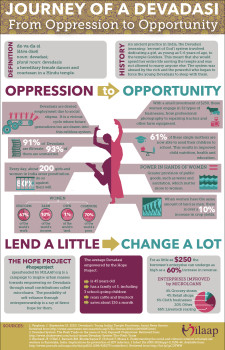By Diana Gomez
It’s okay to take pride in giving back to your community.
Research has suggested that volunteering and donating money to charitable causes not only increases emotional well-being, but physical health as well. And when hungry people get to eat or when a family in need gets a brand new home, why not spread the good word?
In today’s online reality, it’s easy to share your rewarding volunteer experiences with your Facebook friends.
However, the lines of humility here are blurry. Does posting that you’ve donated $1,000 to the Make-A-Wish Foundation come off as sweet, or just bragging? Does anyone really want to see a photo of the three new rescued greyhounds you are fostering?
Here are four questions you should ask yourself in order to maintain your humility when sharing what you’ve been up to in the community.
1. Why am I sharing?
This is a pretty good way to initially approach any social media post. Simply ask yourself: “Why am I posting this, really?”
Here are some possible answers to this question:
- “I want to share my experience.”
- “I want to inspire people to do the same.”
- “I want people to know I’m a good person.”
- “I want people to think I’m accomplished.”
Now here’s a surprise: None of these are a bad reason to write up a post.
Whether you do it purposefully or not, social media paints a picture of you as a pared down “brand” of a person. So it’s important to realize your true motives when publicizing this simplified version of you.
If you realize that your true answer is, “I want people to think I’m a good person” and that makes you feel icky-don’t rush to post. Keep that “goodness” to yourself while you think about it a little longer. If you recognize that is your motive, and you feel okay about it-because chances are, if you donate $1,000 to cancer research, you probably are a good person-then it’s okay to share! Just keep reading.
2. What should I post?
Short text, photos, walls of text, and videos are all relevant methods for sharing your charity experiences.
Take the ALS Ice Bucket Challenge, for example. Over $100 million was raised through this viral video campaign-with much debate over the ice bucket dumpers’ humility. Detractors thought it was over-the-top and self-serving; the supporters thought it was just clever and self-deprecating enough to work. I think you can tell here that I’m trying to get you to be introspective again. What did you think of it?
Feel free to be creative with your post. Something that’s engaging for your readers, like a photo, can seem less like bragging than a straight-to-the-point status update.
3. How will people feel?
The language that you use for a post or photo caption is key.
“Just finished my 100th hour volunteering at the soup kitchen. It feels so good to give back!”
“Met a Vietnam veteran who once sang backup vocals for Elvis tonight. #100hours #soupkitchen”
“Feeling so blessed and humbled to have met so many amazing people. Message me if you want to come with next week!” (Location tag: Baltimore Food Pantry)
Again, no wrong answers! Can you spot the differences between these posts?
As the first puts focus on your own feelings, it is honest and relatable. The second is removed from the charitable aspect of the experience while still publicizing that you participate. The third puts the focus on the people you are
helping while gently inviting others to do the same.
Think critically about how your Internet-using friends will feel upon reading your post. Are you attempting to guilt or inspire?
Finally, It is important to remember that the only true way to help disadvantaged people is to empower and dignify them. How would the recipients of your good deeds feel if they saw your post?
4. Where should I post?
After you give to a cause online, there is usually a button to “Share” a boiler-plate post on your Facebook, Twitter, Tumblr, etc. This is an easy way to maintain humility, as it’s coming from a third party. You can’t help it if someone else says something nice about you!
Otherwise, you can craft your own post. Besides social media, you could blast out a mass e-mail, a private message to just a few people, or as a blog post on your website.
5. When should I share?
The most basic rule of humble charity work is to keep the publicity to a minimum. Although you may be incredibly proud of each fundraising goal you reach, it’s good to keep these tips in mind before posting about it every single day.
Just because you do something altruistic doesn’t mean you have to keep it to yourself. Posting with care can inspire others to give back as well-and that’s the “share” that keeps on sharing.

